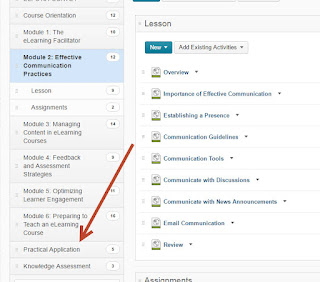I completed the Understand guide based on the content in the eLearning Facilitation Certification Workshop. I also created the diagnostic model based on this content. I did not experience any challenges in this process.
Next, explain the "lessons learned" you have gained from conducting the Understanding step. This might include insights about your project or the facilitation process of working with others. Be sure to describe the role you played as the architect and facilitator during the Understand step.
I learned that the Understand guide is very helpful when conducting interviews with others. The questions are very directed and it really lends itself well to the creation of the diagnostic model. When I conducted my interview, I noticed that my "client" would go into further detail about what they viewed on the model. This led me to realize that the modules needed a checklist to further explain what the learners are required to do.

















































